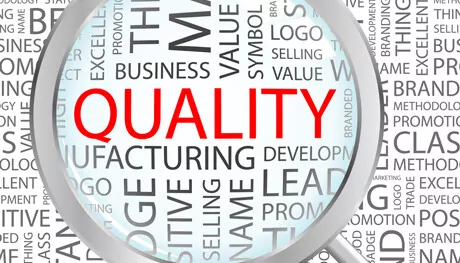Medicinal product shortages continue to be an issue in the pharmaceutical and healthcare industry, as highlighted by PharmaLex Ireland in November 20181. The article outlined the potential benefits of using an appropriate risk-benefit assessment to improve drug availability1. A contributing factor to medicinal product shortages is the presence of particles in parenteral products, identified through visual inspection (VI) methods.
The guidance on the expectations for VI methods including acceptance criteria for particles and other physical issues with parenteral products, e.g. damaged primary packaging, are listed in the various pharmacopoeias: USP, EP and JP. All pharmacopoeias require that each container, where possible, is inspected. Notwithstanding the requirement that 100% of units are visually inspected, particle testing remains a “probabilistic inspection” as described in a recent ECA Academy article (https://www.gmp-compliance.org/gmp-news/do-liqusterile-medicinal-products-have-to-be-particle-free?utm_source=Newsletter&utm_medium=email&utm_campaign=ECA+GMP+Newsletter+KW29+-+2019+-+PEU )2. The probability of detecting a single particle is dependent on a variety of factors such as size of the particle, its colour, its opalescence, its shape and its position in the container2.
Whilst reactive and proactive measures are important to prevent finished product issues, the pharmaceutical industry is moving towards more predictive and prescriptive methods, exploiting the advances in software available. Artificial intelligence (AI) is the use of computer algorithms to analyse large amounts of data. It garnered interest from the sector in recent years with potential applications in supply chain management, clinical trial end points, and drug discovery as outlined in the Pharmaceutical Online article entitled How AI Tools Will Transform Quality Management In The Life Sciences (https://www.pharmaceuticalonline.com/doc/how-ai-tools-will-transform-quality-management-in-the-life-sciences-0001 )3. The use of AI to carry out continuous monitoring of GMP and non-GMP data could lead to continuous product quality assurance3.
A recent Innovate UK blog explained how AI also has the potential to increase productivity and reduce production costs associated with manual VI by offering an automated, digital solution (https://innovateuk.blog.gov.uk/2019/02/14/ai-is-transforming-industrial-inspection/ )4. The combination of machine (computer vision) and deep learning aims to eliminate the challenges associated with manual inspection, such as human error, to identify ‘features of interest’ or defects automatically2.
To date, there have been gaps in the “explainability of AI which raises issues over the confidence and regulation of this technology. Furthermore, AI algorithms change over time as new data is collected and analysed. It is therefore imperative that any systems employing AI undergo comprehensive testing using known inputs and known outcomes in order for industry and regulators to gain trust in AI systems. This process is referred to as “supervised learning”. Security and privacy are other key aspects for consideration3.
PharmaLex offers a range of QMS design and development services including Computer System Validation (CSV) for the manufacture and distribution of medicines. To discuss how PharmaLex can support your organisation, please connect with us on +353 1 846 4742 or email us at contactirl@pharmalex.com.
References
- PharmaLex Ireland. Can an Appropriate Risk-Benefit Assessment Help Drug Availability? November 2018.
- ECA Academy. Do liquid, sterile medicinal products have to be particle-free? GMP News. 17 July 2019. https://www.gmp-compliance.org/gmp-news/do-liqusterile-medicinal-products-have-to-be-particle-free?utm_source=Newsletter&utm_medium=email&utm_campaign=ECA+GMP+Newsletter+KW29+-+2019+-+PEU
- Chapman, J. How AI Tools Will Transform Quality Management In The Life Sciences. Pharmaceutical Online. 16 April 2018. https://www.pharmaceuticalonline.com/doc/how-ai-tools-will-transform-quality-management-in-the-life-sciences-0001
- Krishnamurthy, K. AI is transforming industrial inspection. Innovate UK. 14 February 2019. https://innovateuk.blog.gov.uk/2019/02/14/ai-is-transforming-industrial-inspection/








